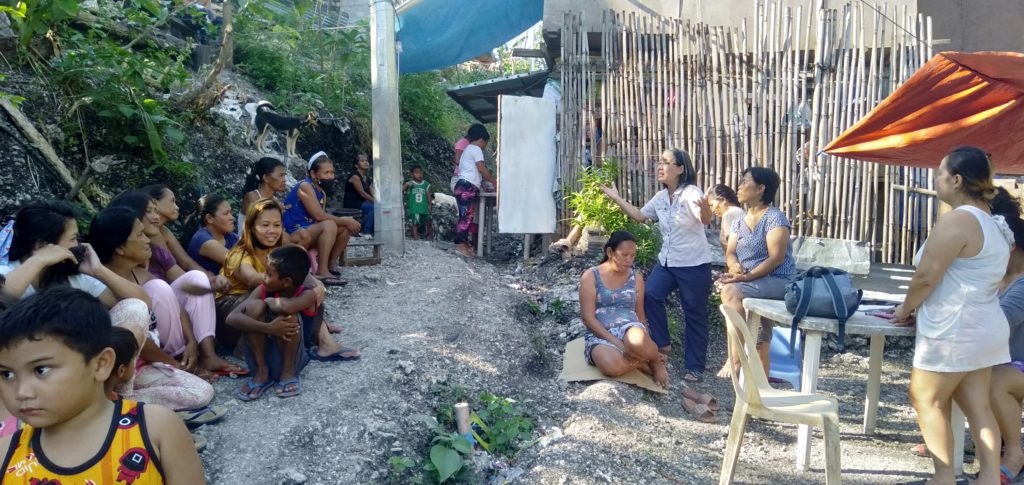The Visayas Primary Health Care Services, Inc. is implementing a project, “Building resilient communities: integrating primary health care in disaster risk reduction and management” in Barangays Patao, Kampinganon, and Lipayran of the Municipality of Bantayan and Barangay San Agustin of the Municipality of Madridejos.
The project is supported by the Unitarian Universalist Service Committee (UUSC) based in the United States. http://www.uusc.org/
The barangays are in Bantayan island in the northern tip of Cebu which were severely affected by Typhoon Yolanda and which remain susceptible to future typhoons and being an island, relief and assistance may not be immediately available after a disaster.
The project works in partnership with the people’s organizations in the four communities, namely: Lipayran Farmers and Fisherfolks association (LIFFA), Patao Drivers and Fisherfolks Association (PADFA), Kampinganon Farmers Association (KFA), and San Agustin Farmers and Fisherfolks Association (SAFFA).
The project aims to increase the capacities of the four barangays to prepare and manage health emergencies and disasters.
Specifically, the project aims to enhance the capacity of the people’s organizations on community-based disaster risk reduction and management, to train community health workers (CHWs) on primary health care to prepare and to manage health emergencies and disasters, to mobilize them to teach their community members about health preparedness and address common health problems, thereby decreasing their vulnerabilities in times of emergencies and disasters, and to establish coordination on disaster management between the people’s organizations and their local disaster risk reduction and management (DRRM) councils.
Last August, to ensure the smooth implementation of the project, the project was introduced and discussed during meetings with the leaders of the people’s organizations and representatives of the barangay councils. They were very happy and enthusiastic about the project because they saw the need for it and they assured their cooperation.
From September to November, trainings on disaster risk reduction management were conducted among the four people’s organizations. They were attended by the leaders of the organizations, health committees, disaster preparedness committees and representatives from the local government units.
The topics included an orientation of the national and local disaster situation, stressing on the importance of incapacitating communities to prepare for disasters, the Philippines being highly vulnerable to them and the principles of community-based disaster management as a response.
The various activities and stages of risk reduction and disaster management were then discussed, which included survey and monitoring, ways of giving warning system, evacuation center management, relief delivery operation, and community-based mapping. A disaster risk reduction plan was then formulated by each community and disaster kits were distributed to them, consisting of first aid kit, radio transistors, flashlights with extra batteries, whistles, wrenches, and pliers.
As an important additional skill for the people to handle the stresses that come with disasters and even with ordinary times, the Community Resiliency Model (CRM) was also discussed among them and the six CRM skills were demonstrated during practicums.
It is noteworthy that the disaster and health committees in each of the people’s organization are being led by women. The VPHCS had earlier oriented them regarding their tasks and functions so that they will be equipped to serve their respective organizations.
With the disaster risk reduction plans formulated during the trainings, the committees were be in a better position to respond to disasters. The plans were presented in their monthly meetings so that all the members of the organizations would be able to implement the plans, including conducting survey and hazard mapping of their communities and improving their existing disaster maps, warning system and looking for resources for the organization that will help them in times of disasters. The project staff is currently guiding them in these endeavors.
In the coming months, trainings on primary health care shall be conducted for the CHWs to equip them to respond to the health needs of their communities and to decrease their vulnerabilities on health.



